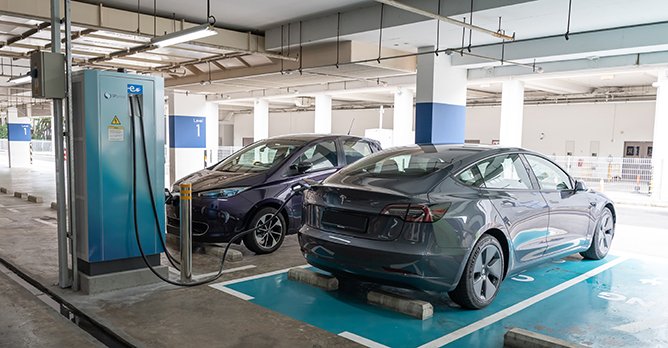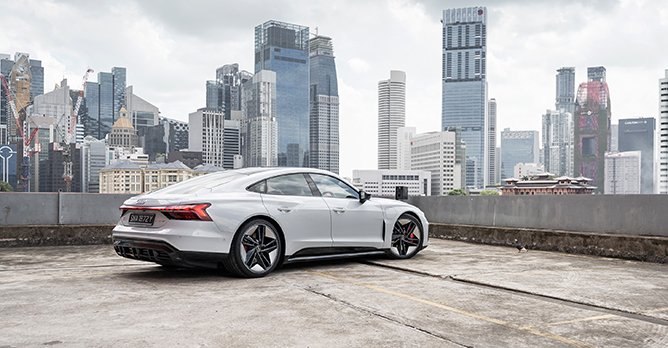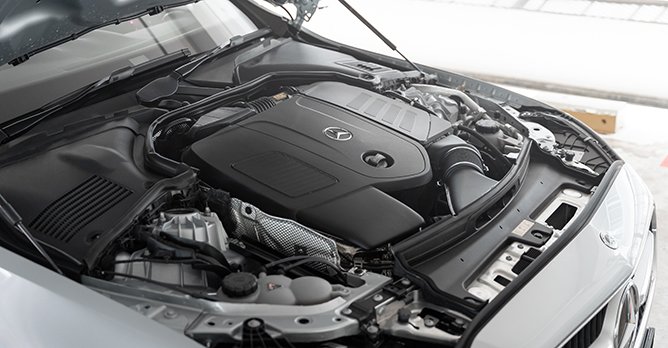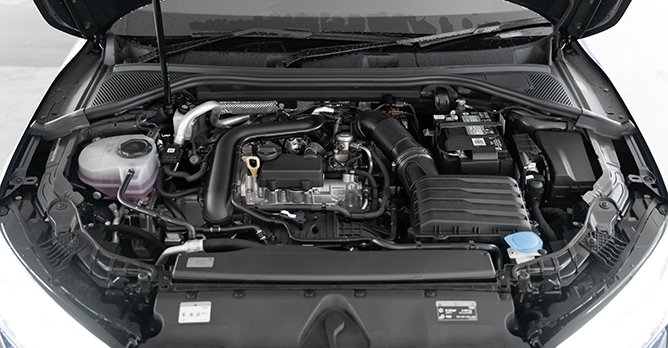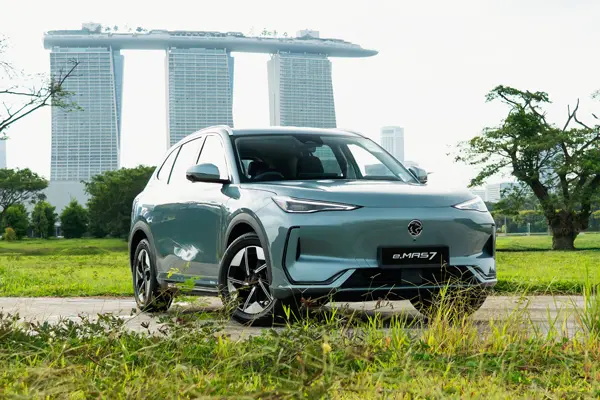Is Singapore's Green Plan 2030 not quite what it seems?
08 Dec 2022|14,904 views
"All newly registered cars to be cleaner-energy models from 2030".
This is one key phrase from the Singapore Green Plan 2030, with which the Land Transport Authority (LTA) has a significant role to play (especially when it comes to how it affects us as car owners).
The LTA has quite publicly proclaimed its vision for a more sustainable land transport system, headlined by the push for accelerated EV adoption.
The headlines have been encouraging, with certain key figures already set out. By 2025, new registration of diesel cars and taxi will cease, and there will be eight EV-ready towns with chargers at all HDB carparks. Furthermore, there is the target of 60,000 charging points nationwide by 2030.
And, of course, "all new car and taxi registrations to be of cleaner-energy models from 2030". Which, in context, is a rather vague statement when compared to the other hard numbers already being put forth.
What does "cleaner-energy models" actually mean?
Mild-Hybrid

 Electric cars are now tracked in a specific category, rather than being previously lumped under 'Other' Quietly, the LTA has modified the way it tracks and publishes its monthly vehicle statistics for new car registrations by make (M03 on the LTA website, if anyone is interested).
Electric cars are now tracked in a specific category, rather than being previously lumped under 'Other' Quietly, the LTA has modified the way it tracks and publishes its monthly vehicle statistics for new car registrations by make (M03 on the LTA website, if anyone is interested).
Why is this change important? Previously, all electrified models (hybrids, plug-in hybrids and full electrics) were all lumped under a single 'Other' category.
However, as of July 2022, the LTA has delineated those categories - there are now specific statistics for 'Petrol-Electric', 'Petrol-Electric (Plug-in)', as well as 'Electric', in addition to 'Petrol' and 'Diesel'.
When we take a closer look at the numbers, one particular thing stands out - it appears mild-hybrids are classified as 'Petrol-Electric', which means that they are lumped together with full hybrids.
How do we know? If you look at the 'Land Rover' statistic, a total of 52 'Petrol-Electric' models have been registered since July. And, considering the only electrified Land Rovers currently being sold are the various mild-hybrid variants of the Defender, Range Rover, Discovery Sport and Evoque (there's no full hybrid in the range yet), it becomes clear that mild-hybrids thus fall into the 'Petrol-Electric' classification.
What does this mean moving forward?
At least from a statistical perspective, it would appear that the 2030 goal of "cleaner-energy models" draws the baseline at mild-hybrid models, of which many manufacturers already have. Put simply, the objective would be to have the number of 'Diesel' and 'Petrol' vehicles (as tracked in LTA's statistic) down to zero by 2030.
Aggressive measures
Globally, many key targets are centred around increasing zero emissions vehicle (ZEV) share. ZEVs are classified as BEVs, PHEVs and fuel cell electric vehicles.
Some countries have already put in place aggressive measures to curb pollution - from EV-only zones to banning ICE vehicles completely, as well as significant financial incentives to go electric. China offers tax exemptions on New Energy Vehicles (BEVs, PHEVs and hydrogen cell vehicles), and has the target of 20% of passenger cars being NEVs by 2025. Korea is aiming to have 51% share of EVs in new vehicle sales by 2025 and 83% by 2030. In the Netherlands, zero emission transport zones will be introduced in 26 cities by 2025. California has legislation in place to have 100% share of ZEVs in passenger vehicles sales by 2035.
You can see all the various policies in place globally here.
For most manufacturers, mild-hybrids have been the somewhat stop-gap measure to meet tightening global emissions standards while they continue to develop and manufacture ZEVs. Even today, we are seeing mild-hybrid powertrains becoming more and more commonplace in new cars. A quick search on the Sgcarmart New Cars page already shows over 80 models with 'Mild Hybrid' in their names.
Mild-hybrids are not the solution, at least not in the long term. They aren't a particularly complicated solution - there's no need to completely redesign a car. In fact, judging by the way many manufacturers have pushed out mild-hybrid models, there is barely any significant change to a conventional ICE model.
While mild-hybrid powertrains have the advantage of lower tailpipe emissions compared to a non-mild-hybrid equvalent, it should be noted, importantly, that mild-hybrids are not ZEVs. From a global perspective, mild-hybrids are not going to help achieve the IEA's Net Zero Scenario (it requires 100% ZEV in car sales by 2035).
Slow approach
Singapore, meanwhile, is taking a much more passive and measured approach. Slow, if you want to call it as it is.
For Singapore, from 2030 onwards, it appears that the solution that has been landed upon, at least for now, is mild-hybrids. While the push towards full EV adoption is aspirational, the reality is that that still seems a long way away.
Even neighbouring countries like Thailand and Indonesia have clearer targets - Thailand targets 100% ZEV new car sales by 2035, while Indonesia is targeting 100% EV new car sales by 2050.
How does the Singapore Green Plan 2030 line up with actual EV adoption? This is much less clear. While initiatives like building up the charging infrastructure will certainly help in EV adoption, as we've previously evaluated, existing incentives and tax structures need to evolve to better account for EVs.
What does this mean for you as a consumer? Well, cars as you currently know them are going to be around much longer than EV-sceptics fear, albeit in mild-hybrid forms.
Purely petrol and diesel cars will fall by the wayside, but that decision will likely be less an active choice by Singapore, but simply a consequence of the OEMs adopting mild-hybrids more. The visual landscape on the local automotive market is going to be familiar for many more years - it's not going to suddenly become overwhelmingly electric, at least not for some of the larger volume mass-market brands.
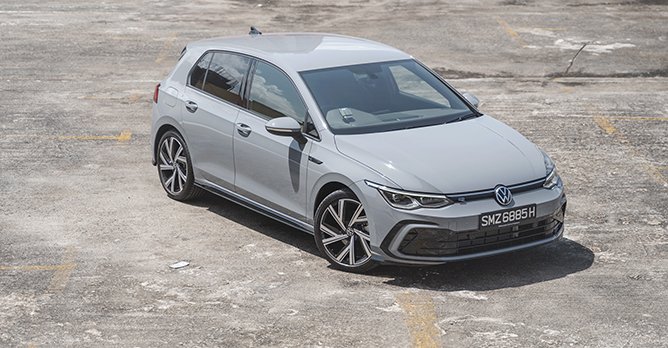
 Even after 2030, expect cars in Singapore to look fairly recognisable - mild-hybrids, yes, but not quite the electric revolution some had in mind This leads us to an potentially interesting intersection - by 2030, several brands will already have transitioned to fully electric new car production (Audi, Mercedes, and Volvo have all committed to going fully electric). New mild-hybrids might not even be an option then, so does that mean we'll only get older production models? Only time will tell.
Even after 2030, expect cars in Singapore to look fairly recognisable - mild-hybrids, yes, but not quite the electric revolution some had in mind This leads us to an potentially interesting intersection - by 2030, several brands will already have transitioned to fully electric new car production (Audi, Mercedes, and Volvo have all committed to going fully electric). New mild-hybrids might not even be an option then, so does that mean we'll only get older production models? Only time will tell.
Judged in the context of where things are moving globally, it does appear that Singapore's present vision feels too conservative. The move toward more widespread electrification, as defined by the Singapore Green Plan 2030, is not toward full electrification, but rather a much more partial form of it. Is that going to be enough? That's the question no one appears to have an answer to. At least not yet.
This is one key phrase from the Singapore Green Plan 2030, with which the Land Transport Authority (LTA) has a significant role to play (especially when it comes to how it affects us as car owners).
The LTA has quite publicly proclaimed its vision for a more sustainable land transport system, headlined by the push for accelerated EV adoption.
The headlines have been encouraging, with certain key figures already set out. By 2025, new registration of diesel cars and taxi will cease, and there will be eight EV-ready towns with chargers at all HDB carparks. Furthermore, there is the target of 60,000 charging points nationwide by 2030.
And, of course, "all new car and taxi registrations to be of cleaner-energy models from 2030". Which, in context, is a rather vague statement when compared to the other hard numbers already being put forth.
What does "cleaner-energy models" actually mean?
Mild-Hybrid

Why is this change important? Previously, all electrified models (hybrids, plug-in hybrids and full electrics) were all lumped under a single 'Other' category.
However, as of July 2022, the LTA has delineated those categories - there are now specific statistics for 'Petrol-Electric', 'Petrol-Electric (Plug-in)', as well as 'Electric', in addition to 'Petrol' and 'Diesel'.
When we take a closer look at the numbers, one particular thing stands out - it appears mild-hybrids are classified as 'Petrol-Electric', which means that they are lumped together with full hybrids.
How do we know? If you look at the 'Land Rover' statistic, a total of 52 'Petrol-Electric' models have been registered since July. And, considering the only electrified Land Rovers currently being sold are the various mild-hybrid variants of the Defender, Range Rover, Discovery Sport and Evoque (there's no full hybrid in the range yet), it becomes clear that mild-hybrids thus fall into the 'Petrol-Electric' classification.
What does this mean moving forward?
At least from a statistical perspective, it would appear that the 2030 goal of "cleaner-energy models" draws the baseline at mild-hybrid models, of which many manufacturers already have. Put simply, the objective would be to have the number of 'Diesel' and 'Petrol' vehicles (as tracked in LTA's statistic) down to zero by 2030.
Aggressive measures
Globally, many key targets are centred around increasing zero emissions vehicle (ZEV) share. ZEVs are classified as BEVs, PHEVs and fuel cell electric vehicles.
Some countries have already put in place aggressive measures to curb pollution - from EV-only zones to banning ICE vehicles completely, as well as significant financial incentives to go electric. China offers tax exemptions on New Energy Vehicles (BEVs, PHEVs and hydrogen cell vehicles), and has the target of 20% of passenger cars being NEVs by 2025. Korea is aiming to have 51% share of EVs in new vehicle sales by 2025 and 83% by 2030. In the Netherlands, zero emission transport zones will be introduced in 26 cities by 2025. California has legislation in place to have 100% share of ZEVs in passenger vehicles sales by 2035.
You can see all the various policies in place globally here.
For most manufacturers, mild-hybrids have been the somewhat stop-gap measure to meet tightening global emissions standards while they continue to develop and manufacture ZEVs. Even today, we are seeing mild-hybrid powertrains becoming more and more commonplace in new cars. A quick search on the Sgcarmart New Cars page already shows over 80 models with 'Mild Hybrid' in their names.
Mild-hybrids are not the solution, at least not in the long term. They aren't a particularly complicated solution - there's no need to completely redesign a car. In fact, judging by the way many manufacturers have pushed out mild-hybrid models, there is barely any significant change to a conventional ICE model.
While mild-hybrid powertrains have the advantage of lower tailpipe emissions compared to a non-mild-hybrid equvalent, it should be noted, importantly, that mild-hybrids are not ZEVs. From a global perspective, mild-hybrids are not going to help achieve the IEA's Net Zero Scenario (it requires 100% ZEV in car sales by 2035).
Slow approach
Singapore, meanwhile, is taking a much more passive and measured approach. Slow, if you want to call it as it is.
For Singapore, from 2030 onwards, it appears that the solution that has been landed upon, at least for now, is mild-hybrids. While the push towards full EV adoption is aspirational, the reality is that that still seems a long way away.
Even neighbouring countries like Thailand and Indonesia have clearer targets - Thailand targets 100% ZEV new car sales by 2035, while Indonesia is targeting 100% EV new car sales by 2050.
How does the Singapore Green Plan 2030 line up with actual EV adoption? This is much less clear. While initiatives like building up the charging infrastructure will certainly help in EV adoption, as we've previously evaluated, existing incentives and tax structures need to evolve to better account for EVs.
What does this mean for you as a consumer? Well, cars as you currently know them are going to be around much longer than EV-sceptics fear, albeit in mild-hybrid forms.
Purely petrol and diesel cars will fall by the wayside, but that decision will likely be less an active choice by Singapore, but simply a consequence of the OEMs adopting mild-hybrids more. The visual landscape on the local automotive market is going to be familiar for many more years - it's not going to suddenly become overwhelmingly electric, at least not for some of the larger volume mass-market brands.

Judged in the context of where things are moving globally, it does appear that Singapore's present vision feels too conservative. The move toward more widespread electrification, as defined by the Singapore Green Plan 2030, is not toward full electrification, but rather a much more partial form of it. Is that going to be enough? That's the question no one appears to have an answer to. At least not yet.
"All newly registered cars to be cleaner-energy models from 2030".
This is one key phrase from the Singapore Green Plan 2030, with which the Land Transport Authority (LTA) has a significant role to play (especially when it comes to how it affects us as car owners).
The LTA has quite publicly proclaimed its vision for a more sustainable land transport system, headlined by the push for accelerated EV adoption.
The headlines have been encouraging, with certain key figures already set out. By 2025, new registration of diesel cars and taxi will cease, and there will be eight EV-ready towns with chargers at all HDB carparks. Furthermore, there is the target of 60,000 charging points nationwide by 2030.
And, of course, "all new car and taxi registrations to be of cleaner-energy models from 2030". Which, in context, is a rather vague statement when compared to the other hard numbers already being put forth.
What does "cleaner-energy models" actually mean?
Mild-Hybrid

 Electric cars are now tracked in a specific category, rather than being previously lumped under 'Other' Quietly, the LTA has modified the way it tracks and publishes its monthly vehicle statistics for new car registrations by make (M03 on the LTA website, if anyone is interested).
Electric cars are now tracked in a specific category, rather than being previously lumped under 'Other' Quietly, the LTA has modified the way it tracks and publishes its monthly vehicle statistics for new car registrations by make (M03 on the LTA website, if anyone is interested).
Why is this change important? Previously, all electrified models (hybrids, plug-in hybrids and full electrics) were all lumped under a single 'Other' category.
However, as of July 2022, the LTA has delineated those categories - there are now specific statistics for 'Petrol-Electric', 'Petrol-Electric (Plug-in)', as well as 'Electric', in addition to 'Petrol' and 'Diesel'.
When we take a closer look at the numbers, one particular thing stands out - it appears mild-hybrids are classified as 'Petrol-Electric', which means that they are lumped together with full hybrids.
How do we know? If you look at the 'Land Rover' statistic, a total of 52 'Petrol-Electric' models have been registered since July. And, considering the only electrified Land Rovers currently being sold are the various mild-hybrid variants of the Defender, Range Rover, Discovery Sport and Evoque (there's no full hybrid in the range yet), it becomes clear that mild-hybrids thus fall into the 'Petrol-Electric' classification.
What does this mean moving forward?
At least from a statistical perspective, it would appear that the 2030 goal of "cleaner-energy models" draws the baseline at mild-hybrid models, of which many manufacturers already have. Put simply, the objective would be to have the number of 'Diesel' and 'Petrol' vehicles (as tracked in LTA's statistic) down to zero by 2030.
Aggressive measures
Globally, many key targets are centred around increasing zero emissions vehicle (ZEV) share. ZEVs are classified as BEVs, PHEVs and fuel cell electric vehicles.
Some countries have already put in place aggressive measures to curb pollution - from EV-only zones to banning ICE vehicles completely, as well as significant financial incentives to go electric. China offers tax exemptions on New Energy Vehicles (BEVs, PHEVs and hydrogen cell vehicles), and has the target of 20% of passenger cars being NEVs by 2025. Korea is aiming to have 51% share of EVs in new vehicle sales by 2025 and 83% by 2030. In the Netherlands, zero emission transport zones will be introduced in 26 cities by 2025. California has legislation in place to have 100% share of ZEVs in passenger vehicles sales by 2035.
You can see all the various policies in place globally here.
For most manufacturers, mild-hybrids have been the somewhat stop-gap measure to meet tightening global emissions standards while they continue to develop and manufacture ZEVs. Even today, we are seeing mild-hybrid powertrains becoming more and more commonplace in new cars. A quick search on the Sgcarmart New Cars page already shows over 80 models with 'Mild Hybrid' in their names.
Mild-hybrids are not the solution, at least not in the long term. They aren't a particularly complicated solution - there's no need to completely redesign a car. In fact, judging by the way many manufacturers have pushed out mild-hybrid models, there is barely any significant change to a conventional ICE model.
While mild-hybrid powertrains have the advantage of lower tailpipe emissions compared to a non-mild-hybrid equvalent, it should be noted, importantly, that mild-hybrids are not ZEVs. From a global perspective, mild-hybrids are not going to help achieve the IEA's Net Zero Scenario (it requires 100% ZEV in car sales by 2035).
Slow approach
Singapore, meanwhile, is taking a much more passive and measured approach. Slow, if you want to call it as it is.
For Singapore, from 2030 onwards, it appears that the solution that has been landed upon, at least for now, is mild-hybrids. While the push towards full EV adoption is aspirational, the reality is that that still seems a long way away.
Even neighbouring countries like Thailand and Indonesia have clearer targets - Thailand targets 100% ZEV new car sales by 2035, while Indonesia is targeting 100% EV new car sales by 2050.
How does the Singapore Green Plan 2030 line up with actual EV adoption? This is much less clear. While initiatives like building up the charging infrastructure will certainly help in EV adoption, as we've previously evaluated, existing incentives and tax structures need to evolve to better account for EVs.
What does this mean for you as a consumer? Well, cars as you currently know them are going to be around much longer than EV-sceptics fear, albeit in mild-hybrid forms.
Purely petrol and diesel cars will fall by the wayside, but that decision will likely be less an active choice by Singapore, but simply a consequence of the OEMs adopting mild-hybrids more. The visual landscape on the local automotive market is going to be familiar for many more years - it's not going to suddenly become overwhelmingly electric, at least not for some of the larger volume mass-market brands.

 Even after 2030, expect cars in Singapore to look fairly recognisable - mild-hybrids, yes, but not quite the electric revolution some had in mind This leads us to an potentially interesting intersection - by 2030, several brands will already have transitioned to fully electric new car production (Audi, Mercedes, and Volvo have all committed to going fully electric). New mild-hybrids might not even be an option then, so does that mean we'll only get older production models? Only time will tell.
Even after 2030, expect cars in Singapore to look fairly recognisable - mild-hybrids, yes, but not quite the electric revolution some had in mind This leads us to an potentially interesting intersection - by 2030, several brands will already have transitioned to fully electric new car production (Audi, Mercedes, and Volvo have all committed to going fully electric). New mild-hybrids might not even be an option then, so does that mean we'll only get older production models? Only time will tell.
Judged in the context of where things are moving globally, it does appear that Singapore's present vision feels too conservative. The move toward more widespread electrification, as defined by the Singapore Green Plan 2030, is not toward full electrification, but rather a much more partial form of it. Is that going to be enough? That's the question no one appears to have an answer to. At least not yet.
This is one key phrase from the Singapore Green Plan 2030, with which the Land Transport Authority (LTA) has a significant role to play (especially when it comes to how it affects us as car owners).
The LTA has quite publicly proclaimed its vision for a more sustainable land transport system, headlined by the push for accelerated EV adoption.
The headlines have been encouraging, with certain key figures already set out. By 2025, new registration of diesel cars and taxi will cease, and there will be eight EV-ready towns with chargers at all HDB carparks. Furthermore, there is the target of 60,000 charging points nationwide by 2030.
And, of course, "all new car and taxi registrations to be of cleaner-energy models from 2030". Which, in context, is a rather vague statement when compared to the other hard numbers already being put forth.
What does "cleaner-energy models" actually mean?
Mild-Hybrid

Why is this change important? Previously, all electrified models (hybrids, plug-in hybrids and full electrics) were all lumped under a single 'Other' category.
However, as of July 2022, the LTA has delineated those categories - there are now specific statistics for 'Petrol-Electric', 'Petrol-Electric (Plug-in)', as well as 'Electric', in addition to 'Petrol' and 'Diesel'.
When we take a closer look at the numbers, one particular thing stands out - it appears mild-hybrids are classified as 'Petrol-Electric', which means that they are lumped together with full hybrids.
How do we know? If you look at the 'Land Rover' statistic, a total of 52 'Petrol-Electric' models have been registered since July. And, considering the only electrified Land Rovers currently being sold are the various mild-hybrid variants of the Defender, Range Rover, Discovery Sport and Evoque (there's no full hybrid in the range yet), it becomes clear that mild-hybrids thus fall into the 'Petrol-Electric' classification.
What does this mean moving forward?
At least from a statistical perspective, it would appear that the 2030 goal of "cleaner-energy models" draws the baseline at mild-hybrid models, of which many manufacturers already have. Put simply, the objective would be to have the number of 'Diesel' and 'Petrol' vehicles (as tracked in LTA's statistic) down to zero by 2030.
Aggressive measures
Globally, many key targets are centred around increasing zero emissions vehicle (ZEV) share. ZEVs are classified as BEVs, PHEVs and fuel cell electric vehicles.
Some countries have already put in place aggressive measures to curb pollution - from EV-only zones to banning ICE vehicles completely, as well as significant financial incentives to go electric. China offers tax exemptions on New Energy Vehicles (BEVs, PHEVs and hydrogen cell vehicles), and has the target of 20% of passenger cars being NEVs by 2025. Korea is aiming to have 51% share of EVs in new vehicle sales by 2025 and 83% by 2030. In the Netherlands, zero emission transport zones will be introduced in 26 cities by 2025. California has legislation in place to have 100% share of ZEVs in passenger vehicles sales by 2035.
You can see all the various policies in place globally here.
For most manufacturers, mild-hybrids have been the somewhat stop-gap measure to meet tightening global emissions standards while they continue to develop and manufacture ZEVs. Even today, we are seeing mild-hybrid powertrains becoming more and more commonplace in new cars. A quick search on the Sgcarmart New Cars page already shows over 80 models with 'Mild Hybrid' in their names.
Mild-hybrids are not the solution, at least not in the long term. They aren't a particularly complicated solution - there's no need to completely redesign a car. In fact, judging by the way many manufacturers have pushed out mild-hybrid models, there is barely any significant change to a conventional ICE model.
While mild-hybrid powertrains have the advantage of lower tailpipe emissions compared to a non-mild-hybrid equvalent, it should be noted, importantly, that mild-hybrids are not ZEVs. From a global perspective, mild-hybrids are not going to help achieve the IEA's Net Zero Scenario (it requires 100% ZEV in car sales by 2035).
Slow approach
Singapore, meanwhile, is taking a much more passive and measured approach. Slow, if you want to call it as it is.
For Singapore, from 2030 onwards, it appears that the solution that has been landed upon, at least for now, is mild-hybrids. While the push towards full EV adoption is aspirational, the reality is that that still seems a long way away.
Even neighbouring countries like Thailand and Indonesia have clearer targets - Thailand targets 100% ZEV new car sales by 2035, while Indonesia is targeting 100% EV new car sales by 2050.
How does the Singapore Green Plan 2030 line up with actual EV adoption? This is much less clear. While initiatives like building up the charging infrastructure will certainly help in EV adoption, as we've previously evaluated, existing incentives and tax structures need to evolve to better account for EVs.
What does this mean for you as a consumer? Well, cars as you currently know them are going to be around much longer than EV-sceptics fear, albeit in mild-hybrid forms.
Purely petrol and diesel cars will fall by the wayside, but that decision will likely be less an active choice by Singapore, but simply a consequence of the OEMs adopting mild-hybrids more. The visual landscape on the local automotive market is going to be familiar for many more years - it's not going to suddenly become overwhelmingly electric, at least not for some of the larger volume mass-market brands.

Judged in the context of where things are moving globally, it does appear that Singapore's present vision feels too conservative. The move toward more widespread electrification, as defined by the Singapore Green Plan 2030, is not toward full electrification, but rather a much more partial form of it. Is that going to be enough? That's the question no one appears to have an answer to. At least not yet.
Thank You For Your Subscription.













